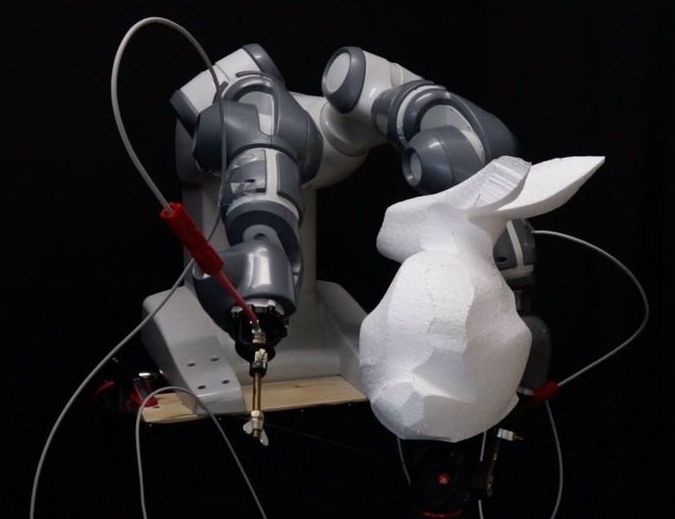How do you calculate the coordinated movements of two robot arms so they can accurately guide a highly flexible tool? ETH researchers have integrated all aspects of the optimisation calculations into an algorithm. A hot-wire cutter will be used, among other things, to develop building blocks for a mortar-free structure.
A newborn moves its arms and hands largely in an undirected and random manner. It has to learn how to coordinate them step by step. Years of practice are required to master the finely balanced movements of a violinist or calligrapher. It is therefore no surprise that the advanced calculations for the optimal movement of two robot arms to guide a tool precisely involve extremely challenging optimisation tasks. The complexity also increases greatly when the tool itself is not rigid, but flexible in all directions and bends differently depending on its position and movement.
Simon Dünser from Stelian Coros’ research group at the Institute for Intelligent Interactive Systems has worked with other researchers to develop a hot–wire cutter robot with a wire that bends flexibly as it works. This allows it to create much more complex shapes in significantly fewer cuts than previous systems, where the electrically heatable wire is rigid and is thus only able to cut ruled surfaces from fusible plastics with a straight line at every point.
